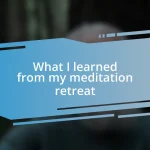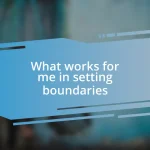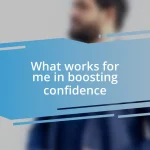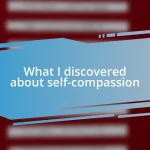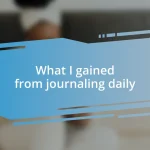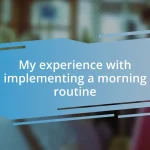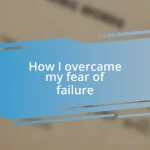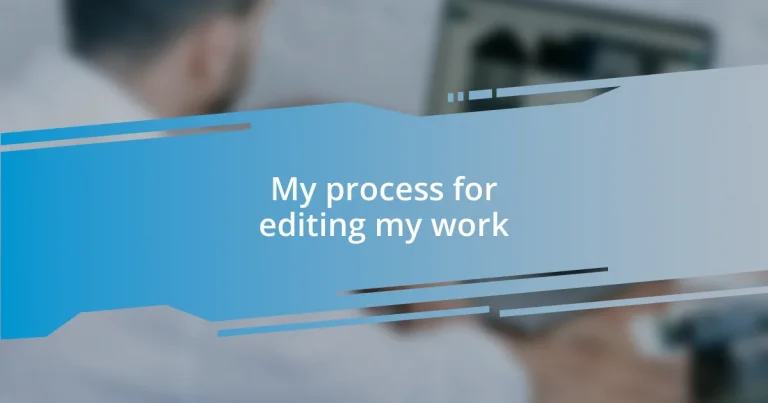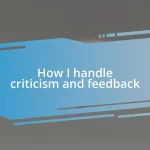Key takeaways:
- Editing involves a process of refinement, requiring fresh perspective and distance from the draft to achieve clarity and coherence.
- Using techniques like reverse outlining, stage-based editing, and focusing on the audience greatly enhances the editing process, making it manageable and effective.
- Finalizing an edited work entails checking for consistency, utilizing read-aloud techniques, and ensuring the tone aligns with the intended audience to create a polished piece.
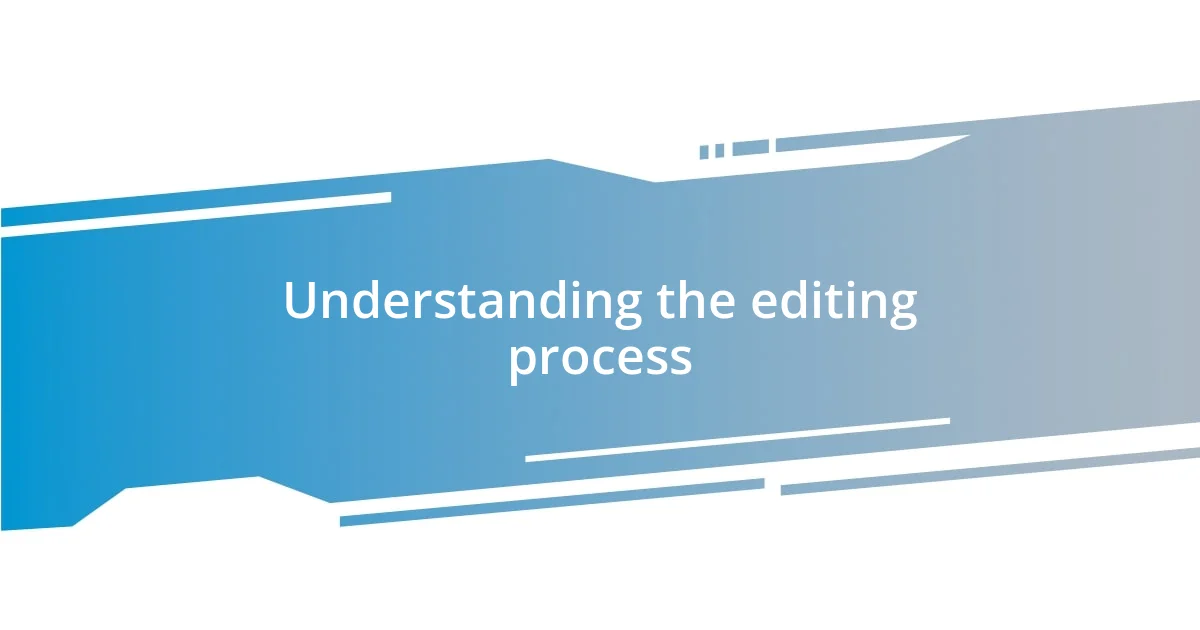
Understanding the editing process
Editing is more than just correcting typos; it’s a journey of refinement and clarity. I remember the first time I finished a draft that I thought was brilliant, only to realize that through editing, it truly transformed into something exceptional. Have you ever felt that electric moment when your work suddenly clicks?
When I dive into editing, I often take a step back to view my piece with fresh eyes. This distance allows me to identify areas that need tightening or even exploring deeper. Sometimes, I ask myself, “Is this really conveying my message, or am I just filling space?” That question often leads to some of the most profound changes in my writing.
One tactic I find useful is to read my work aloud. I recall an occasion where I stumbled over a sentence that looked perfect on the page; hearing it out loud revealed its awkwardness immediately. Have you tried that? It’s amazing how your own voice can reveal inconsistencies or flow issues in ways silent reading cannot.
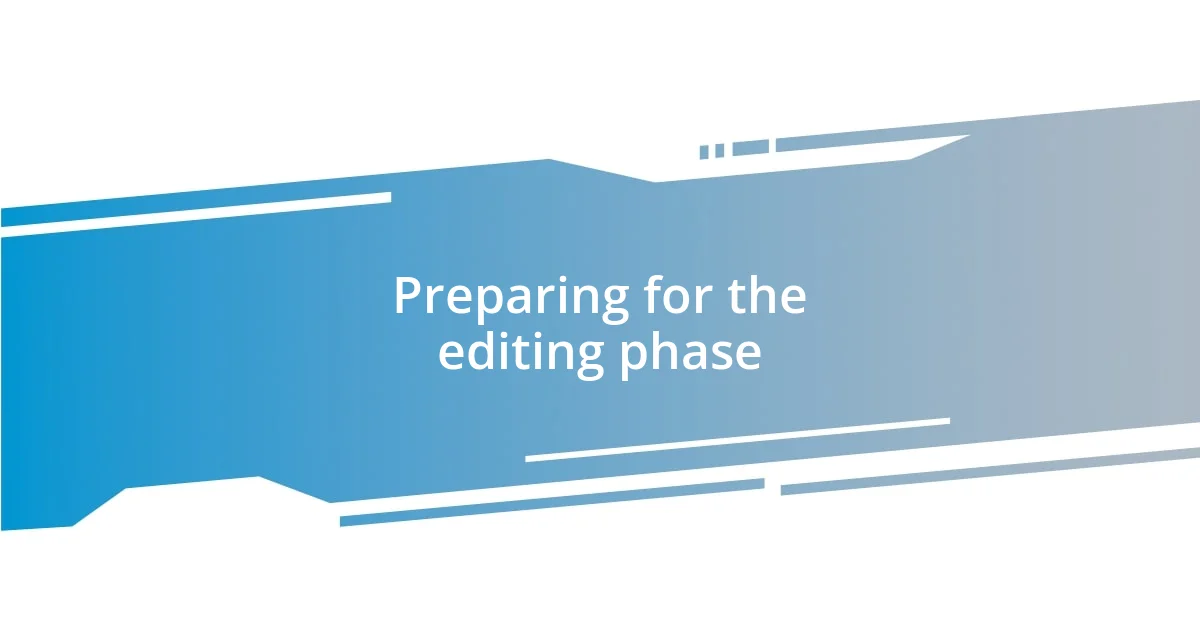
Preparing for the editing phase
Preparing to edit is like mentally gearing up for a marathon; there’s a shift that takes place once you step away from the draft. I like to give my writing some breathing room before diving into the editing phase. It’s incredible how much clarity can surface after a short break—sometimes, all it takes is a walk outside or a quick coffee break. Those moments help reset my mindset, allowing me to approach my work with renewed perspective.
Here’s a brief checklist I follow as I prepare for editing:
- Create a dedicated editing space: A quiet environment minimizes distractions.
- Gather editing tools: Have tools like style guides or dictionaries handy.
- Make a plan: Outline specific areas you want to focus on, such as structure or flow.
- Set a time limit: This keeps the editing phase efficient and purposeful.
- Collect feedback: Consider getting input from trusted peers before starting.
By following these steps, I find that I’m not just ready to edit—I’m excited for the journey ahead.
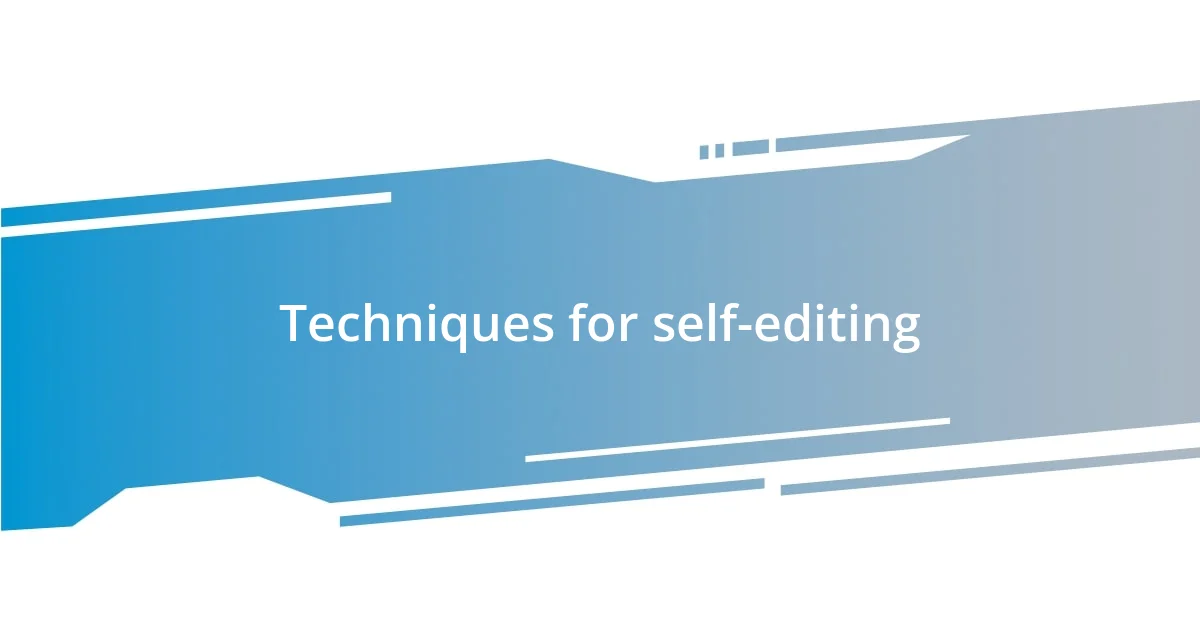
Techniques for self-editing
When it comes to self-editing, one technique I absolutely swear by is the “reverse outline” method. After completing a draft, I create an outline based on what I’ve written, focusing on the main ideas in each paragraph. This often uncovers inconsistencies and helps me spot sections that need more development or trimming. I still remember the satisfaction of refining a piece that started pretty scattered into a coherent narrative simply by mapping it out.
Another practical approach I frequently use is separating the editing stages into distinct passes. First, I focus on the big-picture elements like structure, then I zero in on sentence clarity, and finally, I tackle grammar and punctuation. This method prevents me from getting overwhelmed and allows me to celebrate small victories along the way. The other day, I had an article that felt all over the place. By breaking it down into these stages, I turned it into a well-organized piece without losing my creative vision.
Lastly, I can’t stress enough how vital it is to edit with the audience in mind. I often visualize who I’m writing for and adjust my tone and style accordingly. Recently, when I wrote an article intended for a younger audience, I realized how crucial it was to simplify my language and use relatable examples. This connection not only improved the piece but also made the editing process more enjoyable as I aimed to resonate with my readers.
| Technique | Description |
|---|---|
| Reverse Outline | Creating an outline based on the draft to identify inconsistencies and areas needing adjustment. |
| Stage-Based Editing | Breaking editing into phases: big-picture, clarity, and grammar to streamline the process and avoid overwhelm. |
| Audience Focus | Editing with the readers in mind to tailor tone and language, making the piece more relatable. |
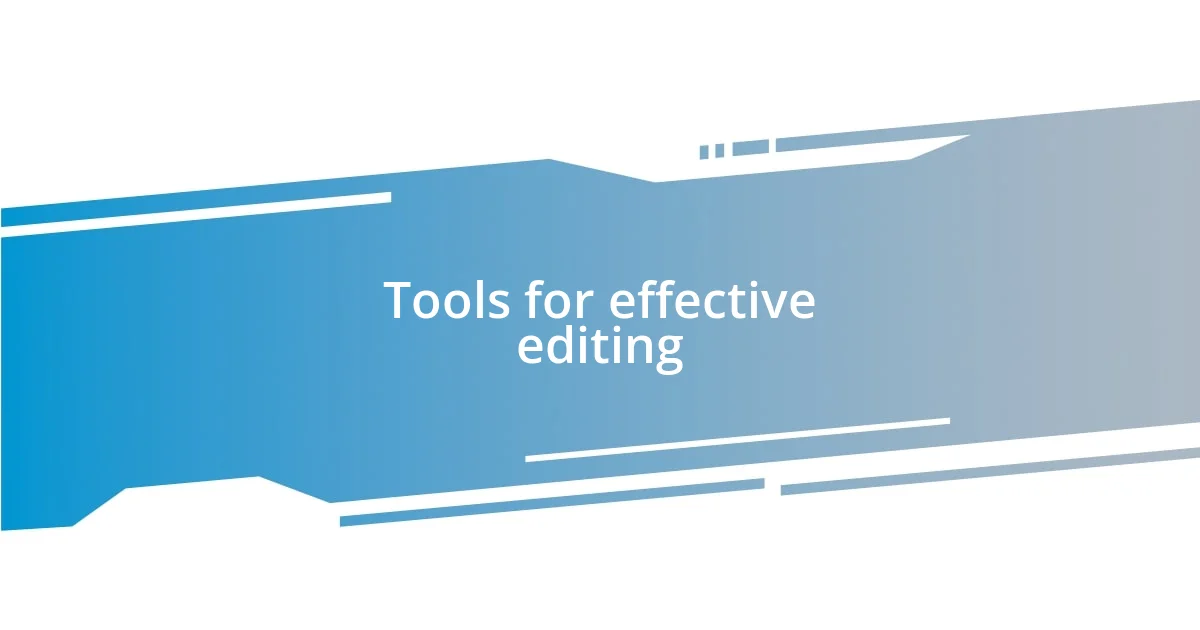
Tools for effective editing
When it comes to tools for effective editing, I find that leveraging digital editing software can truly elevate my work. For instance, I’ve used Grammarly and ProWritingAid, both of which help catch grammatical errors and awkward phrasing. It’s like having a trusted friend look over your shoulder, gently pointing out what needs fixing—although I must admit, it can also feel a bit like having a stern teacher scrutinizing my every word!
Another tool I absolutely love is the classic keyword search function in my word processor. This might sound simple, but it saves me so much time! When I want to check for repetitive phrases or specific terminology I use too often, a quick search highlights all instances in seconds. I remember once, while editing a lengthy blog post, I uncovered a tendency to overuse the word “impact” and promptly substituted it with “influence” or “effect,” which made the text much more varied. Doesn’t it feel rewarding when you catch these little inconsistencies?
Lastly, I can’t underestimate the power of reading my work aloud. This simple act transforms the experience. It’s incredible how hearing the words brings new clarity to the flow and rhythm of the piece. I often come across awkward sentences that didn’t catch my eye while reading silently. Just last week, I was revising a piece when I suddenly stumbled over a sentence that felt too convoluted. It prompted me to simplify my message, allowing the main point to shine through. Have you ever had that enlightening moment when the spoken word reveals what the written word hides? It’s a game-changer!
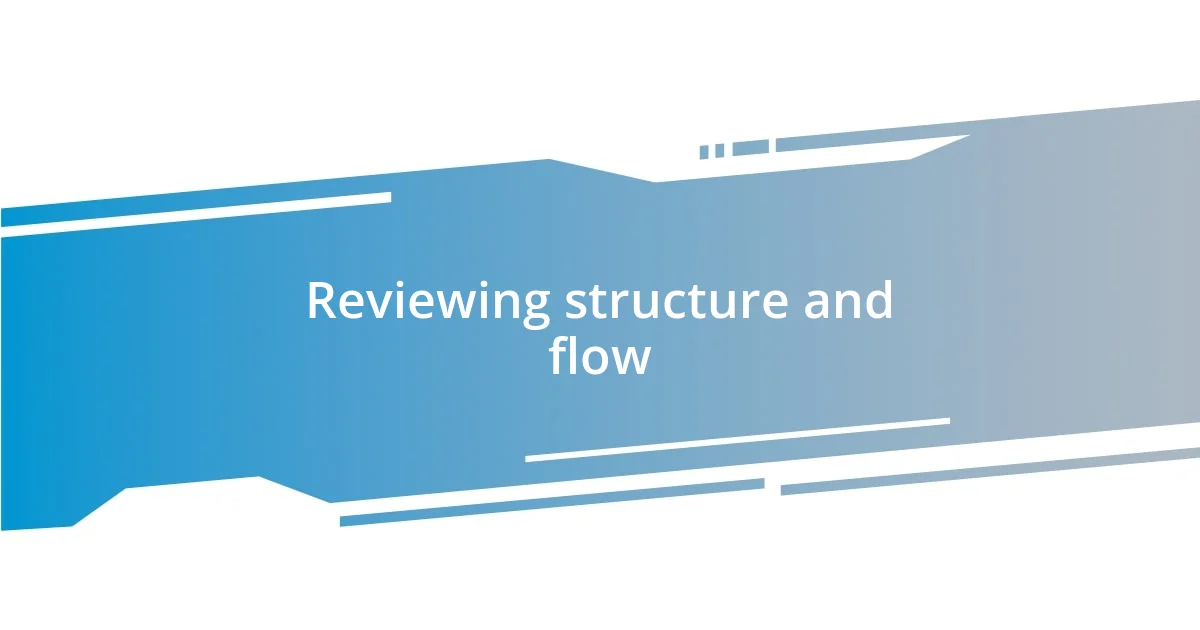
Reviewing structure and flow
When I dive into reviewing structure and flow, I often start by assessing whether my ideas are presented in a logical sequence. I remember a time I wrote a personal essay that felt jumbled. By rearranging paragraphs and adjusting transitions, I transformed it into a compelling narrative that felt effortless to read. Have you ever reshuffled your content and been surprised by how much clearer it is?
I find that a strong introduction and conclusion are key to maintaining flow. They serve as bookends that can tie everything together beautifully. I had an article about sustainable living where my opening was vague; after reworking it to align better with my main points, the entire piece gained coherence. It’s amazing how a small tweak can create a ripple effect throughout the document.
Lastly, reading my work from a fresh perspective—like viewing it as a reader—helps me spot structural weaknesses more easily. Just the other day, I took a completely different approach by changing the font and size to create a new environment for reading. This adjustment often helps me identify areas where the narrative drags or where connections aren’t as strong as they could be. Have you tried this trick? It’s enlightening how changing the format can reinvigorate your editing process.
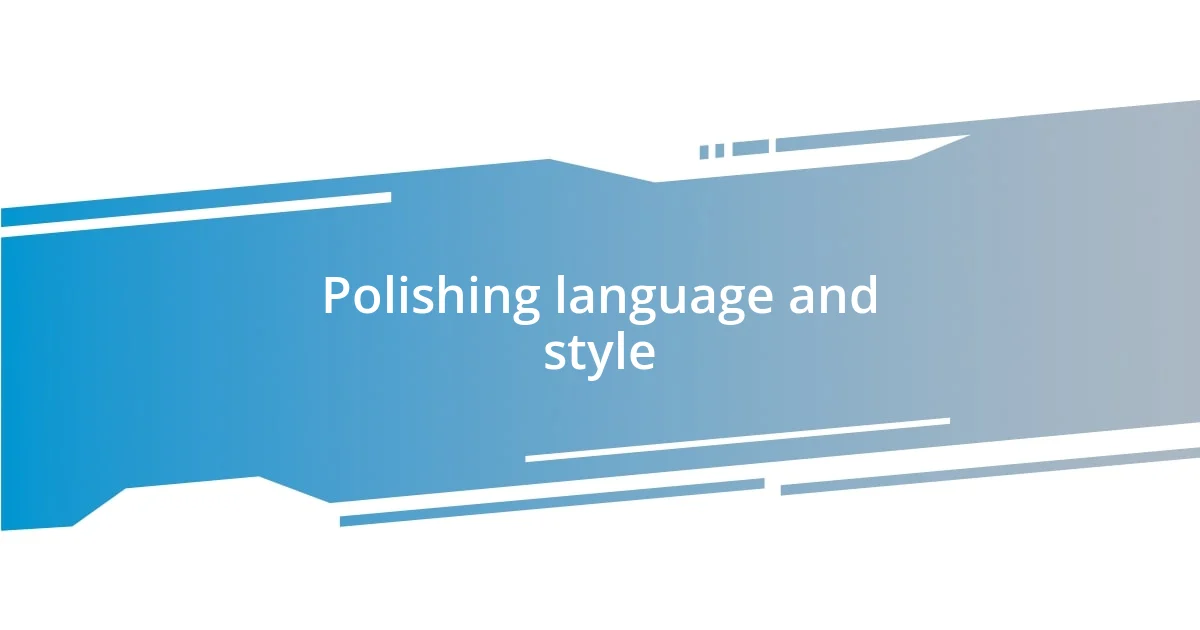
Polishing language and style
When it comes to polishing language and style, I often focus on word choice first. I recall a time I wrote a travel piece where I used “amazing” repeatedly. It felt overused, so I sought synonyms like “astounding” and “breathtaking.” This step not only invigorated my narrative but also provided a fresh lens through which my experiences could shine. Has there been a word you realized you were overusing?
Beyond merely substituting words, I pay close attention to sentence variety. I remember revising a blog post about wellness tips, where most sentences began similarly. By mixing up structure—some short and punchy, others longer and more complex—my writing gained dynamism and rhythm. It’s a delight to see how tweaking sentence length can transform a monotonous passage into something that dances off the page, don’t you think?
Finally, I always aim to capture the right tone for my audience. During a grant proposal I worked on, I initially approached it too casually. Adjusting my language to be more formal while maintaining clarity made a significant difference. It felt like I was giving my ideas the respect they deserved. Have you ever shifted your tone and noticed how it completely alters the reception of your message? That realization can be quite liberating!
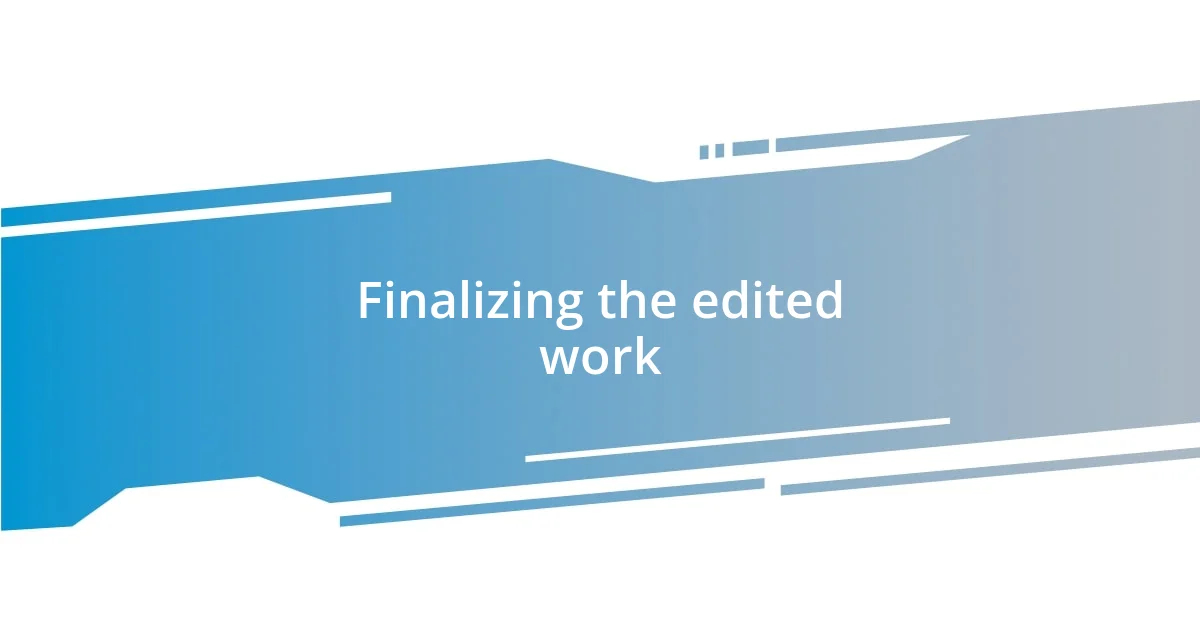
Finalizing the edited work
After I’ve made substantial edits, I find myself diving into the final review with fresh eyes. This last round is crucial; it’s about polishing the work until it shines. I had an experience with a novel draft where, after several rounds, I discovered awkward phrasings that had gone unnoticed. It’s like going through your closet—you often find those hidden gems (or what needs to go!) only when you look closely. Have you ever had that moment of clarity right before hitting “send”?
An important aspect of finalizing is checking for consistency throughout the piece. I remember completing a comprehensive guide on gardening, and I realized I had unintentionally switched between the American and British spellings of words. Noticing these inconsistencies is vital; they can distract readers from your message. How often do we overlook this detail until the very end?
Finally, I can’t stress enough the power of a final read-aloud. I adore this technique; it’s like a performance of my own work. I once finished an article on cooking and read it aloud to a friend, only to catch a few awkward phrases that didn’t quite flow. Hearing my words helps me align them with the rhythm I intend. Have you tried this? You might find it reveals a few surprises that could enhance your final draft.
